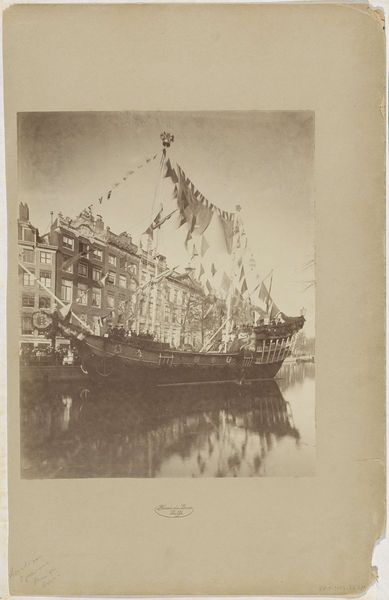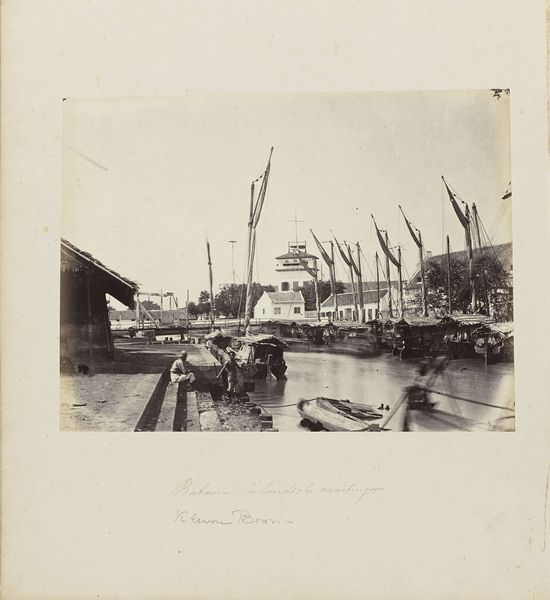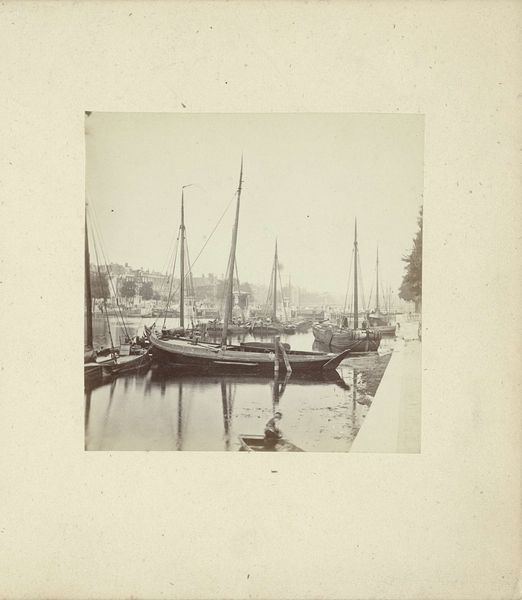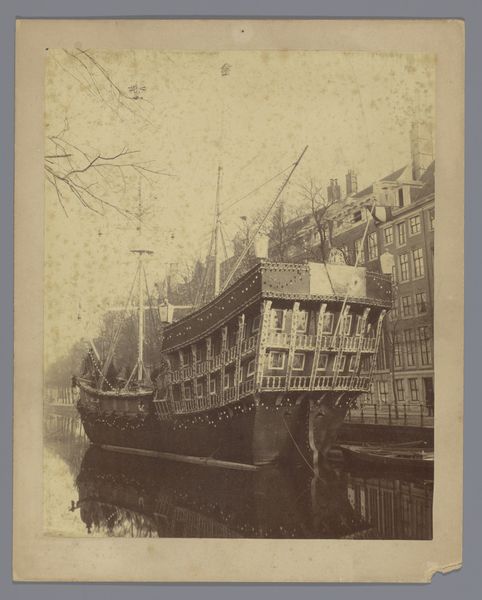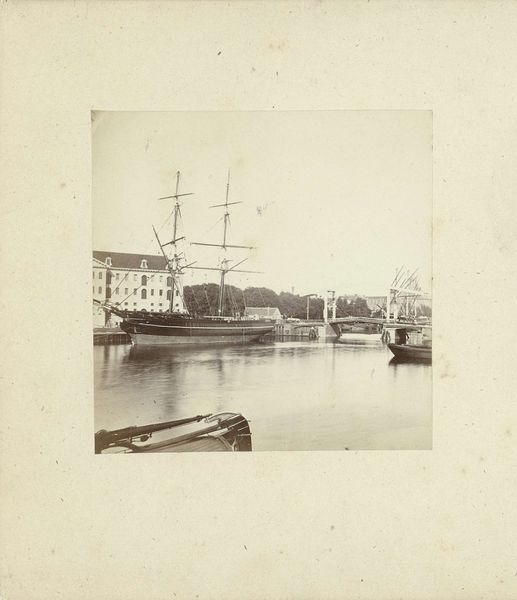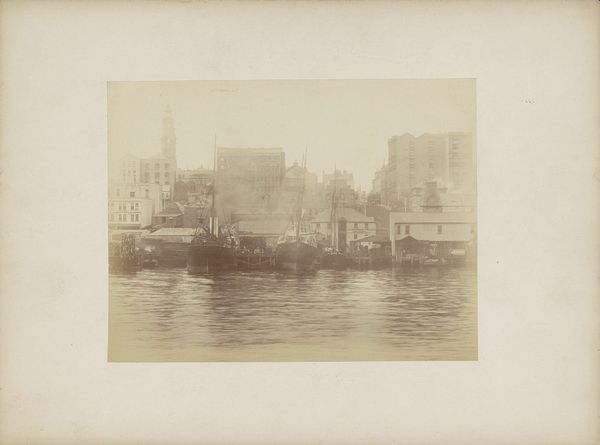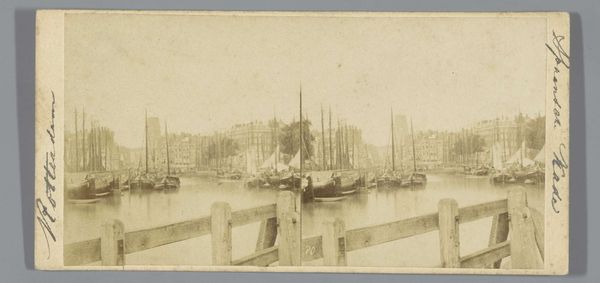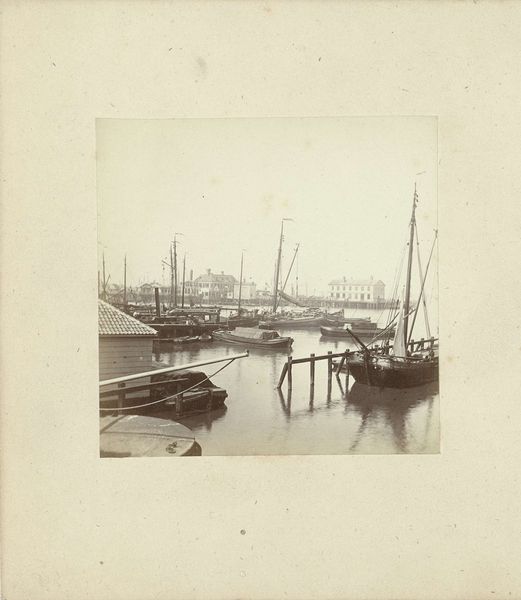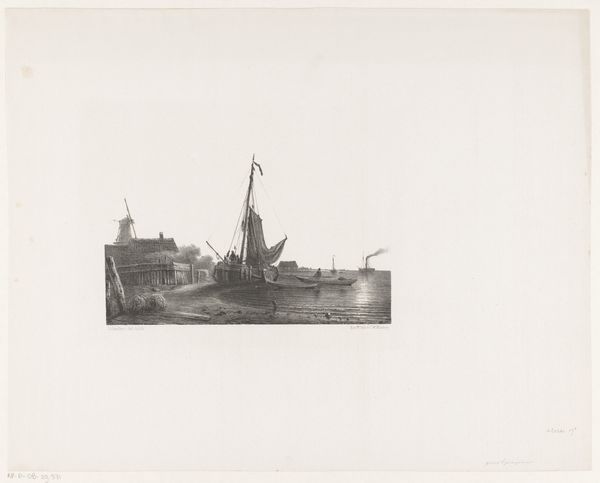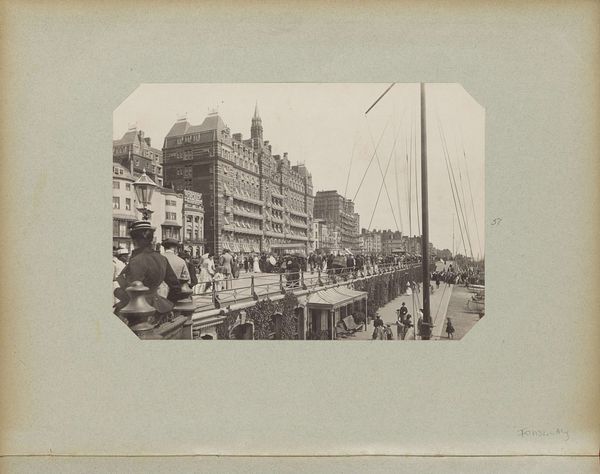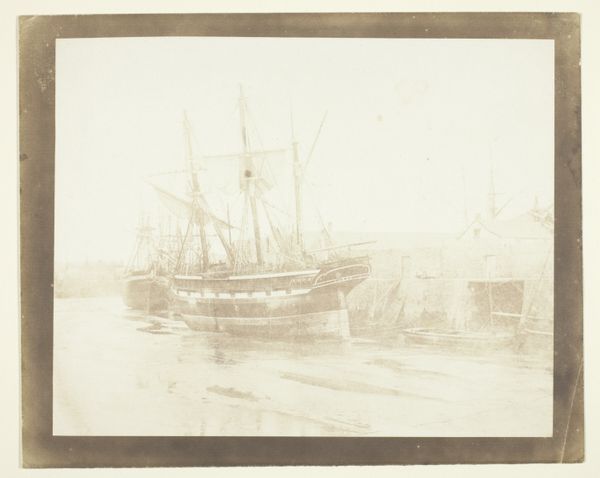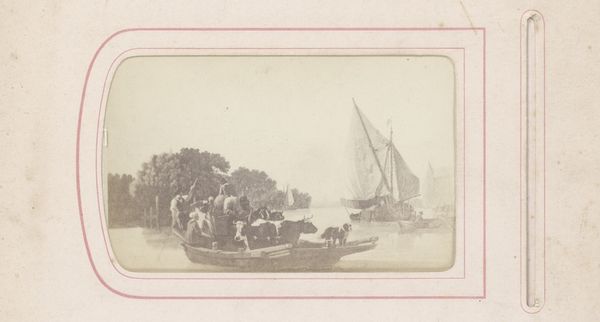
Het schip 't Willemijntje op de Herengracht tijdens de Aprilfeesten van 1887 1887
0:00
0:00
print, photography, albumen-print
# print
#
photography
#
cityscape
#
albumen-print
Dimensions: height 260 mm, width 206 mm, height 435 mm, width 316 mm
Copyright: Rijks Museum: Open Domain
Curator: This albumen print captures "Het schip 't Willemijntje op de Herengracht tijdens de Aprilfeesten van 1887," or the ship 't Willemijntje on the Herengracht during the April festivals of 1887. Henri de Louw is the photographer, and the work now resides here at the Rijksmuseum. What are your first impressions? Editor: Well, beyond its rather muted sepia tones, it strikes me as remarkably celebratory! There are flags everywhere and such a palpable sense of civic pride. It makes me wonder, what exactly were these April Festivals commemorating? Curator: Indeed! Civic pride and historical memory intertwine here. The Aprilfeesten were a series of events celebrating national identity, and nautical symbolism was powerful. Ships had long carried heavy symbolic weight related to exploration, commerce, and defense of the nation. I would further add that ships like these represent societal voyages and progress. Editor: So, this photograph isn't just a document; it's an active participant in shaping public memory. Looking at the faces along the ship’s deck—although difficult to make out with total clarity, what social strata are depicted? Is this a wholly democratic picture, or are we witnessing a staged scene that reveals underlying social structures? Curator: That's an astute question. There is a structured quality to it. The photograph would appeal to elites in Dutch society—the ship on the canal presents an ordered view of things during an important celebration for the elites. It is intended as more formal commemoration for public audiences than as a representation of the lower class. The very staging feels carefully designed to broadcast power and stability through what we could call, cultural performances. Editor: And to that point, what does the presence of this kind of display reveal about the cultural power dynamics in Amsterdam at that moment? Was this an attempt to project unity, or was it highlighting the divisions beneath the surface? Curator: Certainly a projection of unity and continuity, however one that elides any deep social tensions that always exist below a surface-level image such as this one. To further press on this discussion about display, this form of organized visual display can unite and elide tensions, as they become an experience that connects participants together for longer time horizons. It’s important to recall such images have utility to promote particular worldviews through repeated experience of them. Editor: An important aspect that the photograph showcases but that is not obvious, is the display for those physically there on the ground, where everyone involved in creating, sharing, and absorbing these cultural signals felt united and of the same time-historical space. A very successful image indeed, as its echoes remain! Curator: Exactly. The image endures, a symbol continuing to invite reflection about both Dutch history and photographic communication itself. Thank you for shedding some light on this beautiful photograph, 'Het schip 't Willemijntje op de Herengracht tijdens de Aprilfeesten van 1887', at the Rijksmuseum.
Comments
No comments
Be the first to comment and join the conversation on the ultimate creative platform.
